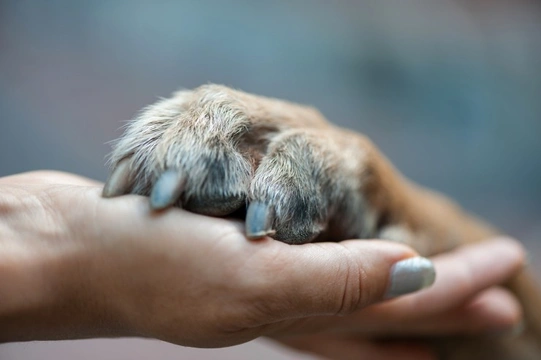Pets
Pets for studWanted petsBreedersAccessories & services
Knowledge hub
Support
Support & safety portal
Seven issues that can affect your dog’s claws
The claws of the dog may be one of the smallest parts of their bodies, but they are very important to help your dog to balance, grip things, scratch, and generally get by! They also have a relatively hard life, as unlike the retractable claws of cats, they are always in contact with the ground and so take a lot of beating!
Even a small problem with one of your dog’s claws can be very painful, and if your dog rips or tears a claw-or if you nip the nerve when trimming their nails-this can bleed prolifically, and be rather painful.
All of this means that it is important to check your dog’s feet over a couple of times a week, to ensure that their claws are healthy and growing normally, and that there is nothing amiss.
In this article, we will look at seven of the most common issues and problems that can affect the dog’s claws, in order to be able to prevent them and sort out any problems that do arise! Read on to learn more.
Trimming injuries
It is really easy to nip the quick when trimming your dog’s nails, particularly if they are very long, or dark so that you cannot see where the nerve begins. For this reason, many people prefer to leave the trimming to a professional-and you can also help your dog to wear their nails down naturally by walking them along pavements and hard surfaces as well as on grass alone.
If you do accidentally nip the quick of the nail, this is likely to cause a sharp pain that will make your dog yelp and pull away (and want to avoid trimming next time) as well as bleeding quite heavily.
When clipping your dog’s claws, make sure that you do it slowly and carefully, and don’t try to clip overly long nails off all in one go, as the quick itself extends as the nail does.
Tears or breaks
Tearing, splitting or breaking of the claws can be very painful for your dog, and can even potentially lead to a broken toe depending on the degree of the damage.
Claws that have split or torn will often continue to grow with the split or crack intact rather than recovering itself, and so this is something that you should talk to your vet about. To reduce the risk of problems of this type, keep your dog’s claws trimmed to a sensible length.
Infections
Fungal and bacterial infections can set up in and around the feet of the dog, and these can potentially work their way under the sheath of the nail and fester, until they cause swelling, inflammation and pain. Infections around and under the claws often form into abscesses, and even if they do not, they will still require attention from your vet to treat them.
Keeping an eye on the state of your dog’s claws, trimming them regularly and taking care to avoid injuries to the nails will all help to reduce the chances of a possible infection.
Foreign bodies
All sorts of debris can get stuck in the pad of your dog’s paws, from thorns that pierce the surface to grit and dirt that gets stuck in the gaps. Small foreign bodies like pieces of grit or even pips and seeds can potentially lodge in the pads or nail sheaths, and these may work their way under the sheath of the nail, where they are likely to cause pain and inflammation as the body tried to remove the invader! If you can tell that something has worked its way under the sheath of the nail, or if something seems to be there that you cannot see or get to, ask your vet to check it out.
Overly long claws
If your dog’s nails are overly long, this greatly increases the risk of them catching on something and tearing or splitting. Additionally, very long claws can actually affect your dog’s gait, as well as increasing the chances of the claw growing abnormally.
Abnormal claw growth
Healthy dog claws exit the nail sheath cleanly, on a slight downward curve to account for the shape of the toes and feet. However, certain anomalies, dietary deficiencies and other health conditions and even overly long nails can cause abnormal claw growth, such as the claw growing in a twisted shape, or growing at an odd angle that causes it to affect other parts of the foot.
Avoiding injuries and keeping your dog’s claws at a healthy length can help to prevent this, and if your dog does break or split a nail, make sure that your vet checks it out to minimise the chances of abnormal regrowth and any problems.
Dewclaw damage
Finally, it is important that you do not overlook the importance of the dewclaws, which grow on the inside of the front legs in most dogs and in some breeds, on the hind legs too.
Dewclaws that protrude too much or that grow overly fast or long can cause problems such as ingrowing, catching on the opposite leg, or being prone to catching on obstacles that may rip the dewclaw itself.
If your dog’s dewclaws are normal and healthy, just check them out with the other claws in case of any problems. However, if your dog’s dewclaws do tend to catch on things or grow very long, you might want to talk to your vet about having them surgically removed to prevent further problems.



